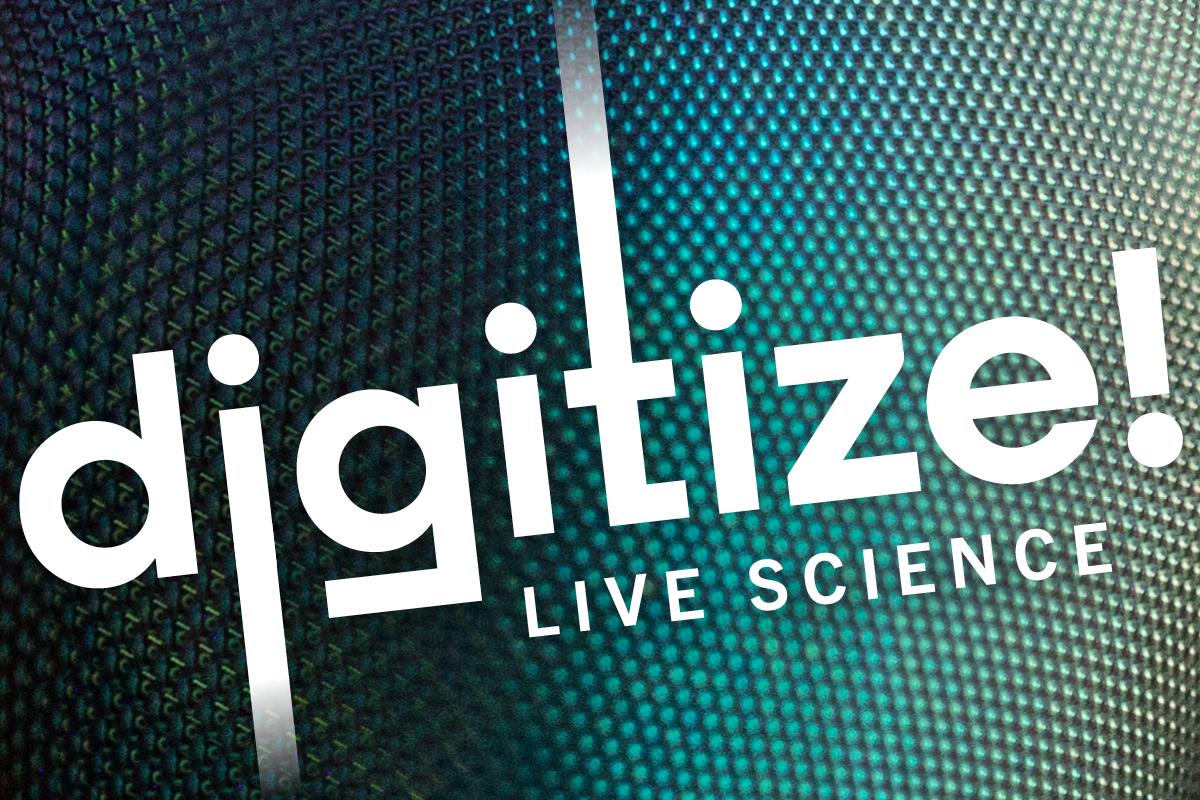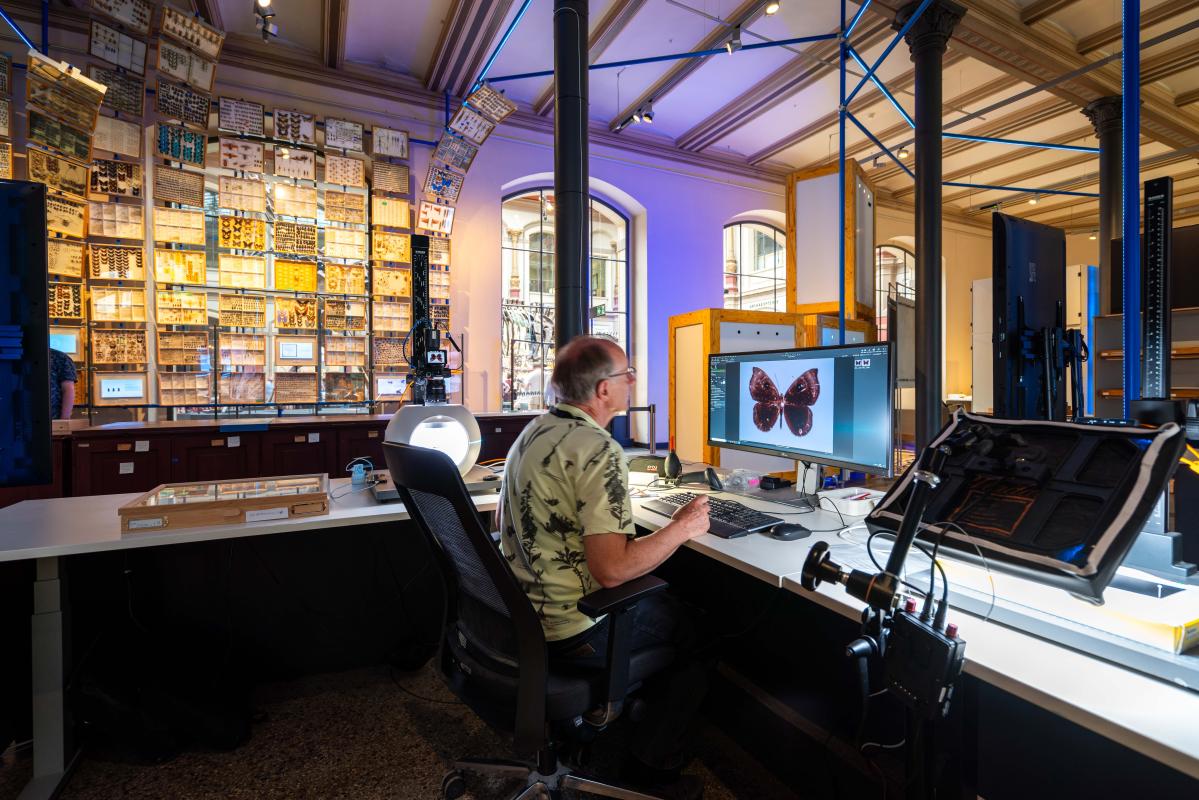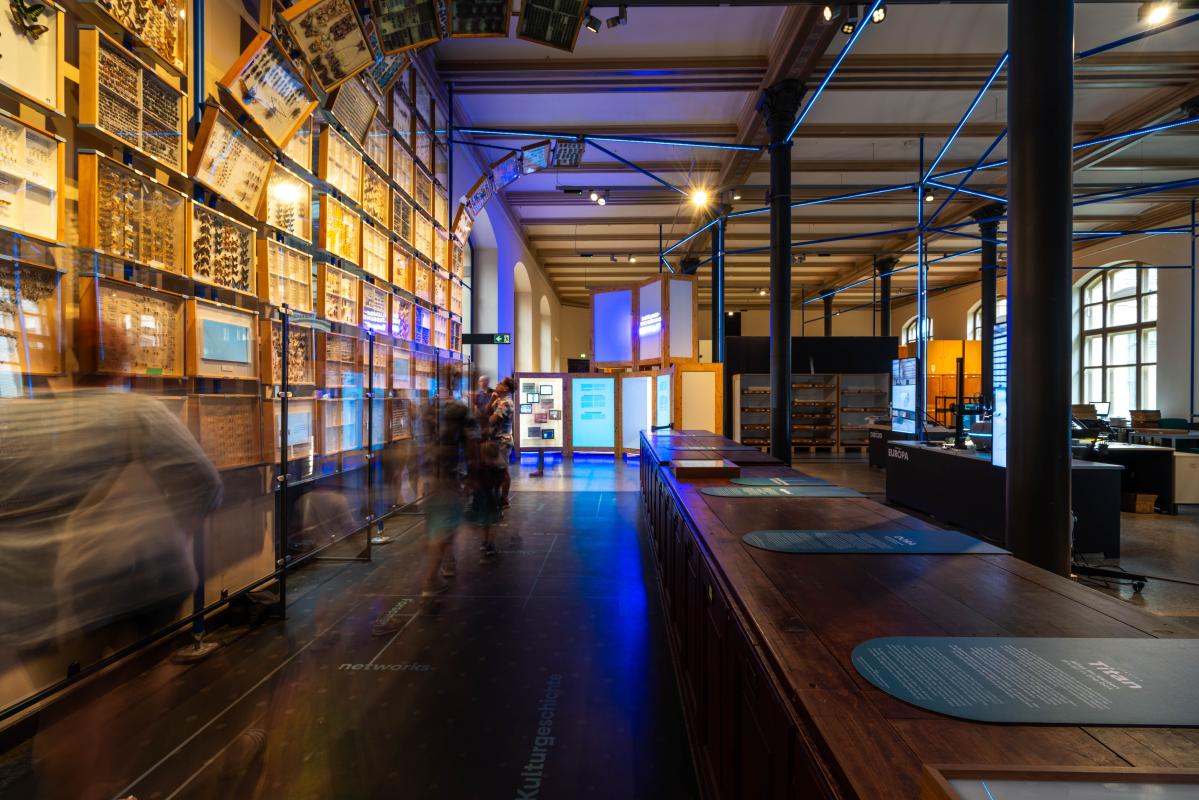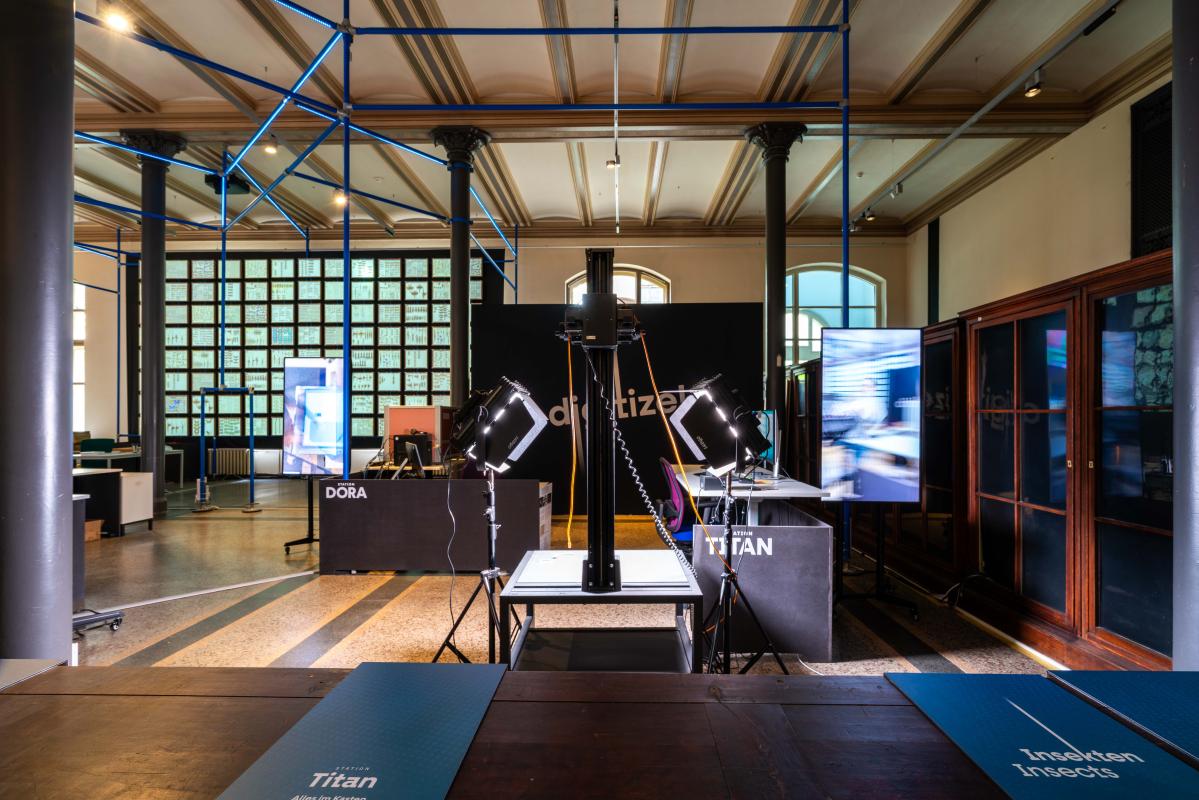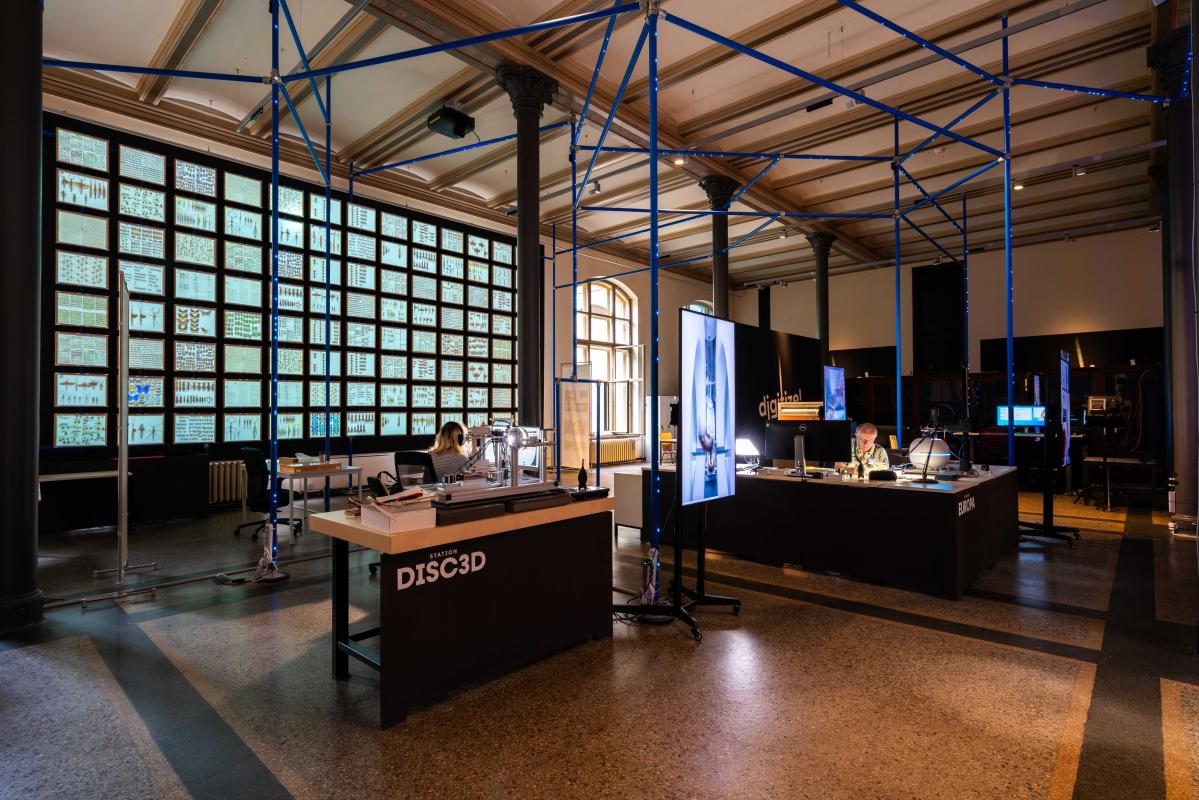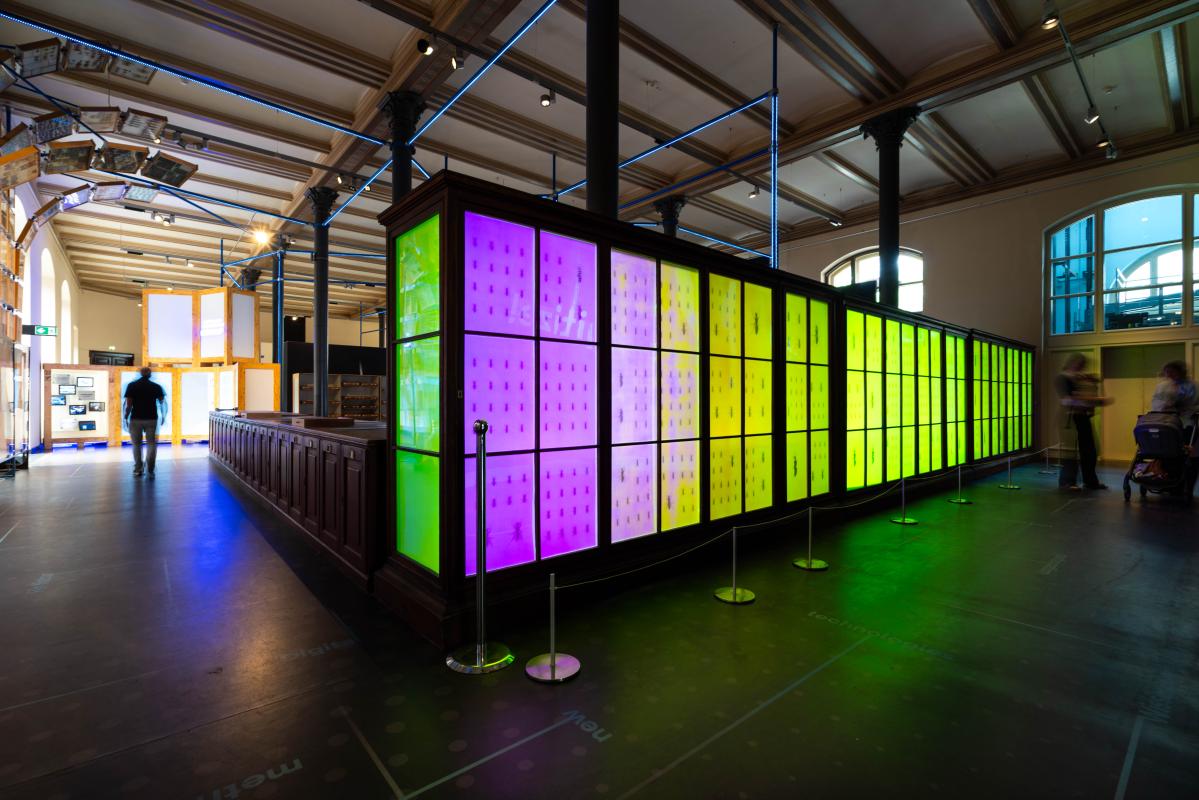Digitization lab in the exhibition
30 million objects – that's the size of the museum's collection. Over the next few years, we will be digitizing our collection bit by bit as part of the collection development of our Future plan.
The current focus is on particularly extensive parts of the collection, such as insects and molluscs (e.g., snails and mussels). The museum’s insect collection comprises around 15 million objects. It is the museum’s largest collection in terms of numbers and is divided into so-called insect boxes, which contain dozens to hundreds of insects. The smallest details such as wing structures, genitalia or individual hairs are crucial for their study. These can be made visible using suitable techniques.
There are four digitization stations in the “digitize!” exhibition room, where museum staff and volunteers are working on making the collection digitally accessible:
Station Titan
This is the digitization station for the big picture – and the first point of contact for digitization requests in the insect collection. At this station, high-resolution images of entire insect boxes are created. This overview is usually sufficient for researchers to pick out individual insects and request more precise images of individual animals, which can then be produced at the other digitization stations in the room.
Station Europa
The finest structures are often key to the study of insects. The camera technology at this station can capture these tiny details in razor-sharp images. An insect is placed in a spherical light box, which illuminates the insect from every side. A high-resolution camera then takes several detailed photos with di¬fferent points of focus. Using special software, the photos are then combined into a single sharp image and stored in a digital archive.
Station DISC3D
This device is the world’s first 3D scanner for insects. It creates 3D models that depict even the fine veins on the wings of insects. The scanner runs for 1.5 hours and creates around 25,000 images from di¬fferent angles. The individual images are combined on the computer to create a complete 3D model. With the 3D models, researchers can study the insects in detail without having to use the valuable originals.
Station DORA
Snails, mussels & co (molluscs) make up the museum’s second largest collection after insects. Their locations and geographic distribution patterns reveal a lot about the changes in nature. As their shells are very rich in form and detail, they are often collected in large numbers. These are digitized together as object groups.
Gain a unique insight into the work of the museum and discover exciting stories about research and the collection.
